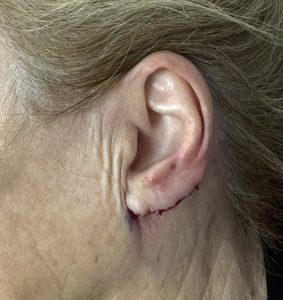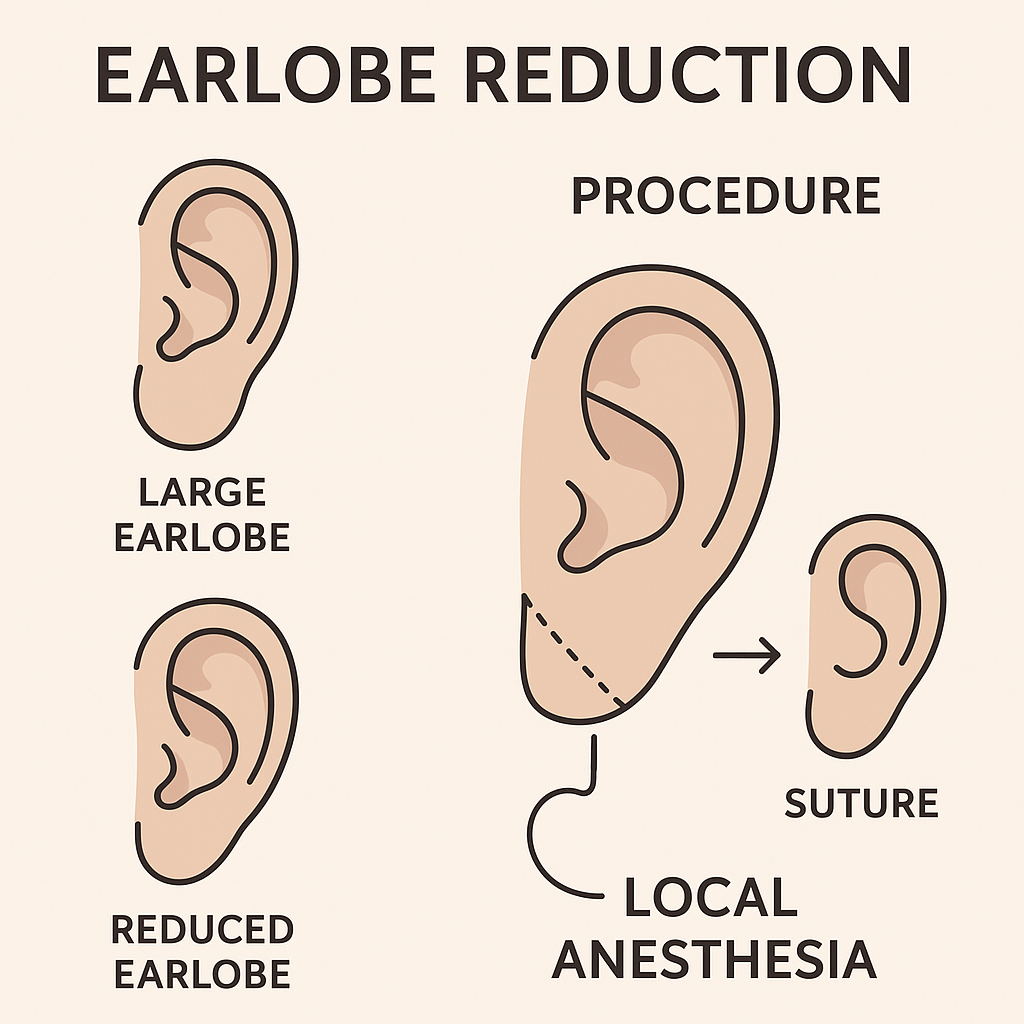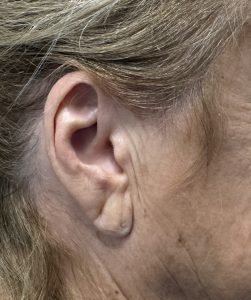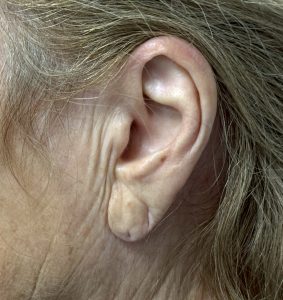Introduction
Earlobe reduction is a minor cosmetic procedure designed to make large, elongated, or stretched earlobes smaller and more proportionate. Patients commonly seek this procedure when their earlobes appear too long, wide, or heavy—whether naturally, from aging, or after years of wearing heavy earrings.
The procedure reshapes the lower portion of the ear by removing a crescent of skin and soft tissue using the inferior helical rim excision technique. The remaining tissue is then sutured together, placing the scar along the bottom of the earlobe where it is well camouflaged.
Patients may benefit from earlobe reduction if they have:
-
Naturally large or pendulous earlobes
-
Earlobe elongation associated with aging
-
Stretching due to heavy earrings
-
A desire for a more refined, youthful ear appearance
The procedure can also be combined with earlobe repair for torn or widened piercings.
Case Study
This older female patient had gradually developed elongated earlobes due to lifelong earring wear and naturally thinner soft tissues. Relative to the cartilage-bearing upper portion of her ear, the earlobes occupied a disproportionate amount of total ear height. Her vertical ear length measured 72 mm.


Discussion
The exact purpose of the earlobes remains uncertain, but several theories exist:
1. Support for Blood Flow and Temperature Regulation
Earlobes contain a rich vascular supply but lack cartilage. Because of this, they may play a small role in maintaining warmth in the ear, though their contribution to thermoregulation is minimal.
2. Structural Balance for the Outer Ear
While the earlobe does not improve hearing, it helps balance the overall shape of the pinna and may contribute to stabilizing the ear structure.
3. Evolutionary Remnant
Some biologists consider the earlobe an evolutionary leftover—similar to wisdom teeth—without a significant functional role today.
Why Earlobes Lengthen With Age
Although their purpose remains debated, the reason earlobes elongate over time is well understood. Unlike the upper ear, the earlobe contains no cartilage, and without this structural support, the soft tissues gradually stretch. Heavy earrings can accelerate this process.
Surgical Approaches
Soft tissue reduction of the earlobe has a long surgical history with many described techniques. These approaches differ in excision patterns and scar placement, including inverted wedges, T-shaped excisions, and crescentic patterns.
For optimal scar concealment and reliable reshaping, the crescentic excision (inferior helical rim technique) provides excellent control of both earlobe size and contour.
Key Points
-
Earlobe soft tissue, lacking cartilage, is prone to elongation over time, leading to disproportionate ear shape.
-
Crescentic excision offers excellent control of reduction and contour, with a well-hidden scar.
-
Earlobe reduction is a simple in-office procedure performed under local anesthesia with minimal recovery.
Dr. Barry Eppley
World-Renowned Plastic Surgeon





